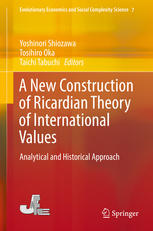

Most ebook files are in PDF format, so you can easily read them using various software such as Foxit Reader or directly on the Google Chrome browser.
Some ebook files are released by publishers in other formats such as .awz, .mobi, .epub, .fb2, etc. You may need to install specific software to read these formats on mobile/PC, such as Calibre.
Please read the tutorial at this link: https://ebookbell.com/faq
We offer FREE conversion to the popular formats you request; however, this may take some time. Therefore, right after payment, please email us, and we will try to provide the service as quickly as possible.
For some exceptional file formats or broken links (if any), please refrain from opening any disputes. Instead, email us first, and we will try to assist within a maximum of 6 hours.
EbookBell Team

4.4
22 reviewsThis is the first book published in English on the new international value theory, presented by Yoshinori Shiozawa in 2007. Shiozawa submitted a solution to the question on international values since Ricardo by constructing a Ricardo–Sraffa model on trading economies with M countries and N commodities including intermediate inputs (normally M < N). The new theory is based on the assumption that prices are determined by production costs, which is the property derived from the classical value theory. The papers collected here deal with the following: introducing readers to the new theory; presenting diagrammatic illustrations of the new theory; analysing efficient patterns of specialization allowing intermediate inputs; examining how the new theory gives a new horizon to the Neo-Ricardian trade theory; investigating competitiveness, the long-period method, and potentiality from the perspectives of the new theory; discussing Mill's conversion toward neoclassical revolution; scrutinizing how the concept of comparative advantage has developed and diverged from Ricardo’s trade theory; discussing the purification of Marshall's value theory through Mill’s influence; reviewing the controversies on international values among Japanese economists; considering the value-added trade based on the Ricardian value theory; and lastly giving a mathematical explanation of the definitions and theorems of the new theory.